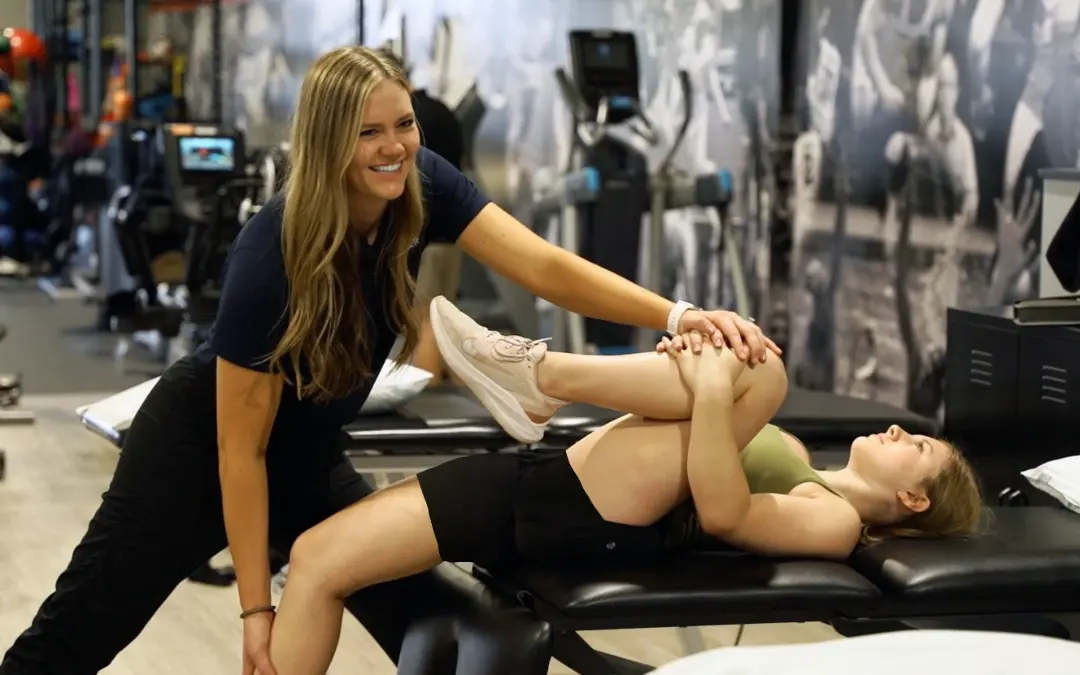I started gymnastics at the age of 3 and went on to be an All-American college athlete. Throughout my athletic career, I had my fair share of injuries. Most of my injuries were typical aches, pains, and ankle sprains, but, when I was a sophomore high school, I had a much larger injury. I had fractured my radial head in my left elbow; however, I wasn’t aware of this and continued to practice and perform all my skills. When I couldn’t fully extend my arm without significant pain, I decided to get it checked out by my doctor. Before my appointment, I continued to practice to the best of my ability. The day before my appointment, I was swinging bars and performed a major release move. I missed and did not catch the bar. Because of the fall, I dislocated my right elbow. From then on, I was out for months and barely was able to compete that season.
After my injury, I wasn’t referred to physical therapy and was told to just continue exercises when at the gym. When I was officially cleared, I went right back into practice, and it was my coaches that guided me back dependent on pain and difficulty. When I was a sophomore again in college, I was performing the same major release and did not catch it and landed a little off onto my left elbow this time- causing a slight tear in my UCL. The difference in treatment was astronomical as my coaches and athletic trainer took me to the orthopedist immediately and I was doing treatment up until graduation as a senior both for rehab following the initial injury as well as prehab once I was cleared.
There is an interesting culture in club gymnastics to push through whatever injury you have. We don’t want to be sidelined from competition, so we don’t report any pain or discomfort we experience. However, when we do this, it causes major issues down the road and can do more harm than good.
Gymnasts also have a tendency to trust their coaches more than physicians or specialists- like physical therapists. This has a lot to do with knowledge of the sport. When injuries happen though, it is important to have a team involved to help the athlete perform their best- including the coach, athletic trainer, physician, and physical therapist.
Common Injuries in Gymnasts
Gymnasts are fascinating athletes because they are both upper and lower extremity athletes. There is so much impact in this sport- and it isn’t limited to just one part of the body. During any event, there is impact on the upper and lower kinetic chain.
When we think of the most common injuries for gymnasts, we can have a wide range stemming from the ankle to the wrist due to the amount of high load and demand is placed throughout the body. The number one injury for gymnasts, however, is the lumbar spine. This is because of the hyperextended position that gymnasts are constantly in. For example, during a handspring, while you hit the ground, your back is extended. If you watch any gymnastics event and pause it once or twice, you will see that position. Most of the time gymnasts achieve the hyperextended position strictly from the lumbar spine and do not utilize the hip extensors or thoracic spine extension placing extreme force on those specific vertebrae.
Gymnasts are also hypermobile. They typically don’t have too many restrictions when it comes to mobility, however, due to their hypermobility they lack stability. These athletes perform high-level skills which put a lot of stress on the body every single day, and without proper stability to keep their joints secure and their muscles strong, it can cause injury.
Reduce the Risk of Injury for Gymnasts
Many gymnasts leave the sport at a young age because of injuries. While rehabilitation is helpful to get gymnasts back to the sport they love, so many injuries could be prevented and would be beneficial for prehab.
Here at Spooner, we offer complimentary screens to identify strengths and weaknesses in movement. For gymnasts, this could be used to discern where they might need more stability so they can succeed in the sport and not be taken out by injury. These screens can also be useful in educating coaches if there is a specific pattern seen by many of their athletes so they can incorporate proper strength and conditioning programs into their training. Ultimately with a movement screen we are able to look at the whole kinetic chain and see how a specific disfunction in one area could cause injury in a completely different joint.
Seeking help for any pain or discomfort you are experiencing can help mitigate a larger injury down the road. Schedule an appointment with a Spooner therapist today!

